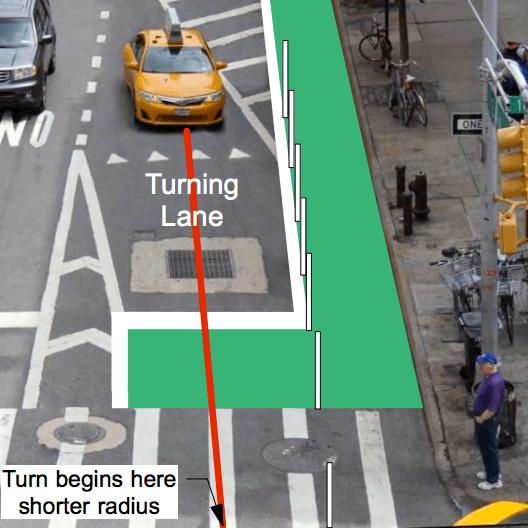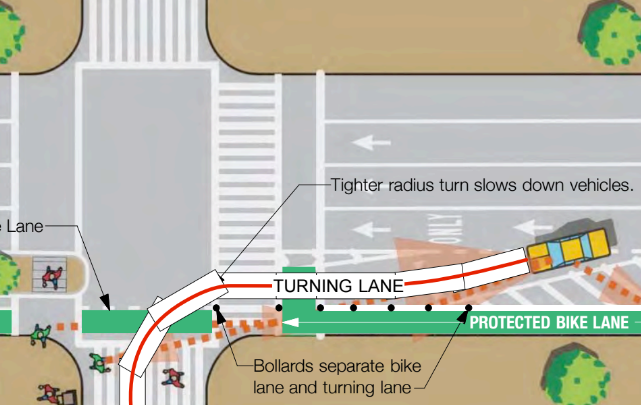Last week a turning box truck driver struck Kelly Hurley, 31, as she rode in the First Avenue bike lane at the intersection with 9th Street. Yesterday, Hurley died from the injuries.
The fatal crash has led to renewed calls for DOT to adopt safer intersection designs for protected bike lanes. The intersection of First Avenue and 9th Street has a "mixing zone" treatment, where cyclists and turning drivers are expected to negotiate the same space at the same time. Intersections with mixing zones have higher rates of cyclist injuries than intersections with "split-phase" signals, which give cyclists and turning drivers separate phases.
On Tuesday, the transportation committee of Manhattan Community Board 7 unanimously passed a resolution calling on DOT to eliminate "mixing zone" intersections on Columbus Avenue and Amsterdam Avenue. The resolution calls for designs that maintain more physical separation between cyclists and motor traffic, force drivers to take turns slower, and extend the bike lane's green paint through the intersection.
The concept is similar to the intervention staged by activists using orange cones at First and 9th last week:

By installing bollards all the way through the far side of the crosswalk, motorists would take safer turns, said Reed Rubey, the architect who put together the concept.
"When you do a sharp 90-degree turn, you have a better opportunity to see pedestrians," Rubey told Streetsblog. "Putting cones like that at every mixing zone, actually at every intersection in the city, would probably be the least-expensive and most effective way to save lives."
Rubey and fellow TransAlt volunteer Willow Stelzer hope to bring their concept to the transportation committee of Manhattan CB 3, the district where Hurley was killed, at its meeting next month.






